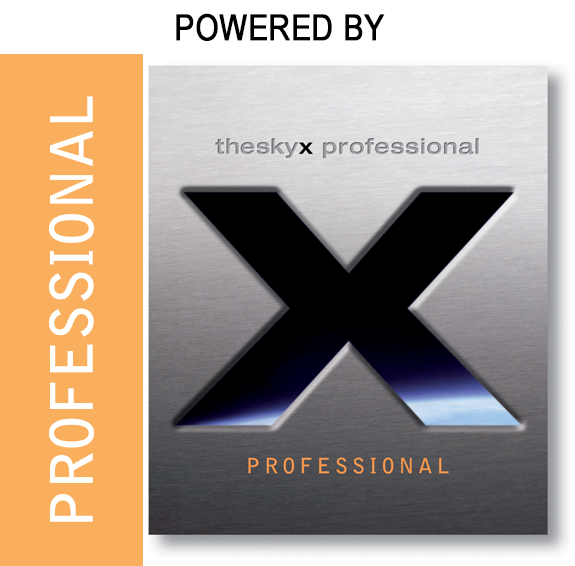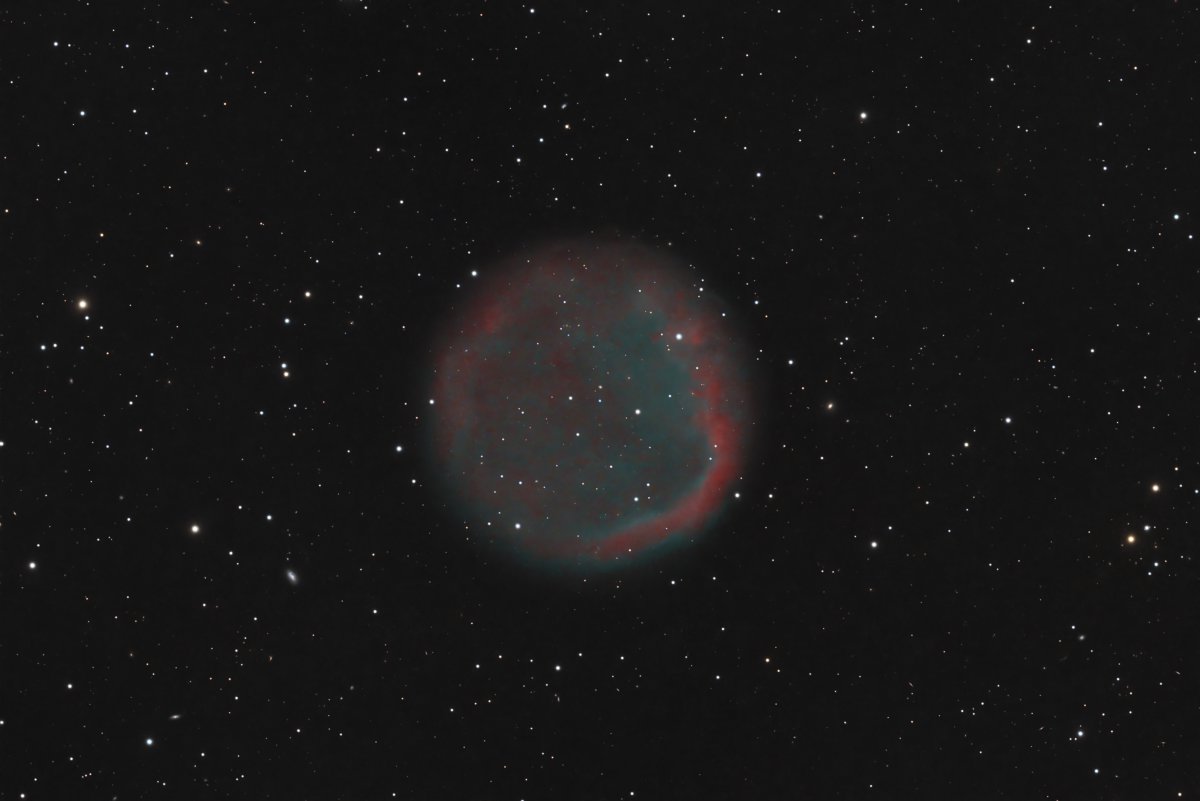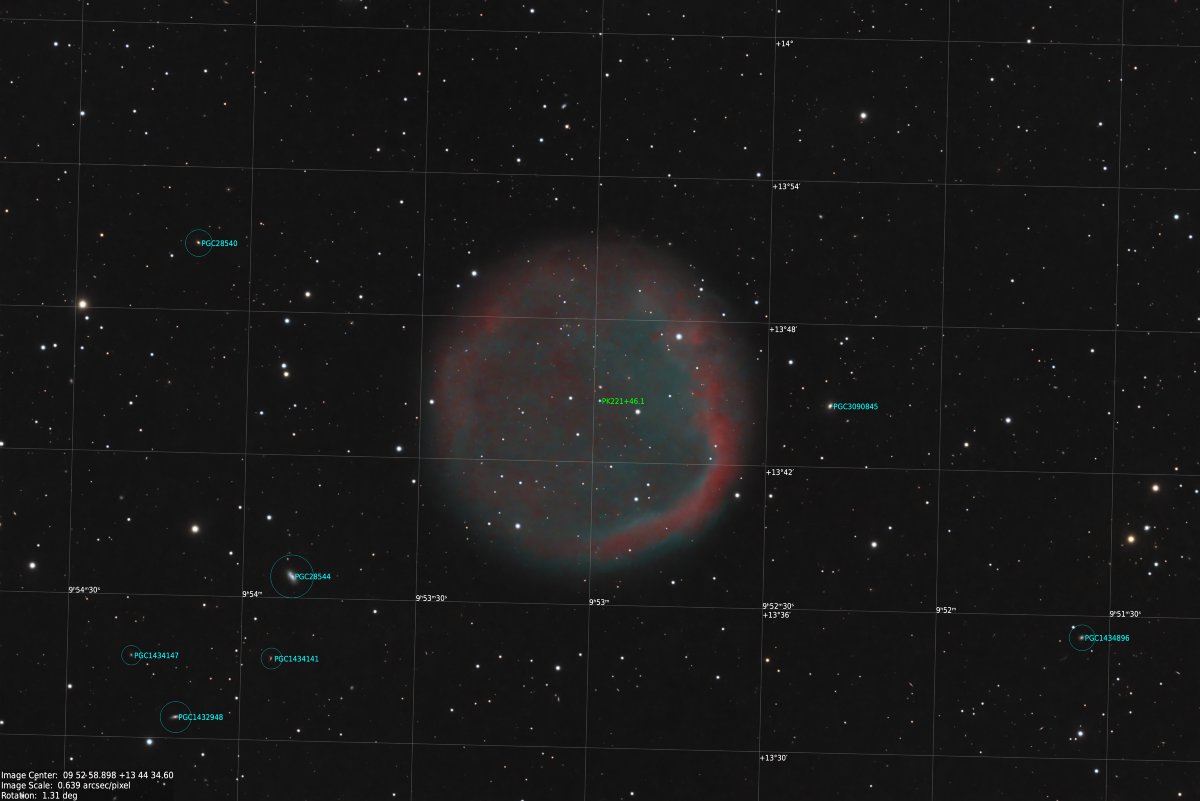Ellis Grayson Bond (EGB) 6
Published 8 April 2023
About this object
EGB 6
RA 09 52 59.0 DEC +13 44 35 (J2000)
11x13 arc min
Ellis, Grayson, Bond 6 (EGB 6) is an extremely faint planetary nebula in the constellation Leo. It was discovered by Howard Bond back in 1984 by looking a Palomar Sky Survey print where he noticed a smudge in the corner. Later, spectra made at Kitt Peak would show the star had strong OIII emission. In his words, "this began the story of EGB 6 ". EGB 6 measures 11x13 arc minutes. Short exposures show nothing here. Only by taking long Ha and OIII exposures was the PN revealed. The central star is a white dwarf (WD0950+139) with a temperature of about 100,000K. It was found by HST to actually be a binary and and several interesting papers have been written about just this star. The image is the result of roughly 6 hrs of RGB images, 27.3hrs of Ha and 30hrs of OIII for a total exposure time of over 64hrs. Red was mapped to Ha and OIII was mapped to Blue and Green. It took me two seasons to get all the data. I started in February 2022 and finished in February 2023. Resolution is .64 arc sec/pixel.
EGB 6
RA 09 52 59.0 DEC +13 44 35 (J2000)
11x13 arc min
Ellis, Grayson, Bond 6 (EGB 6) is an extremely faint planetary nebula in the constellation Leo. It was discovered by Howard Bond back in 1984 by looking a Palomar Sky Survey print where he noticed a smudge in the corner. Later, spectra made at Kitt Peak would show the star had strong OIII emission. In his words, "this began the story of EGB 6 ". EGB 6 measures 11x13 arc minutes. Short exposures show nothing here. Only by taking long Ha and OIII exposures was the PN revealed. The central star is a white dwarf (WD0950+139) with a temperature of about 100,000K. It was found by HST to actually be a binary and and several interesting papers have been written about just this star. The image is the result of roughly 6 hrs of RGB images, 27.3hrs of Ha and 30hrs of OIII for a total exposure time of over 64hrs. Red was mapped to Ha and OIII was mapped to Blue and Green. It took me two seasons to get all the data. I started in February 2022 and finished in February 2023. Resolution is .64 arc sec/pixel.
Image Details
- Optics : Stellarvue SVX 152T refractor @f8 1200mm FL
- Mount: Paramount MYT
- Camera: ZWO ASI6200
- Filters: Chroma 50mm RGB, 5nm OIII, Astrodon 50mm 5nm Ha
- Exposure (min): RGBHaOIII 150:135:140:1640:1800, 64.4 hrs, 1x1 binning
- Automation Control: The Sky X, Voyager, PrimaluceLab Eagle 4
- Guiding: StarlightXpress Lodestar X2
- Processing Software: PixInsight,
- Location: Stark Bayou Observatory, Ocean Springs, MS
- Sky: Typical SQM 19.6-20.1, Bortle 5, Suburban
- Date: 1 Feb 2022 - 13 Feb 2023








